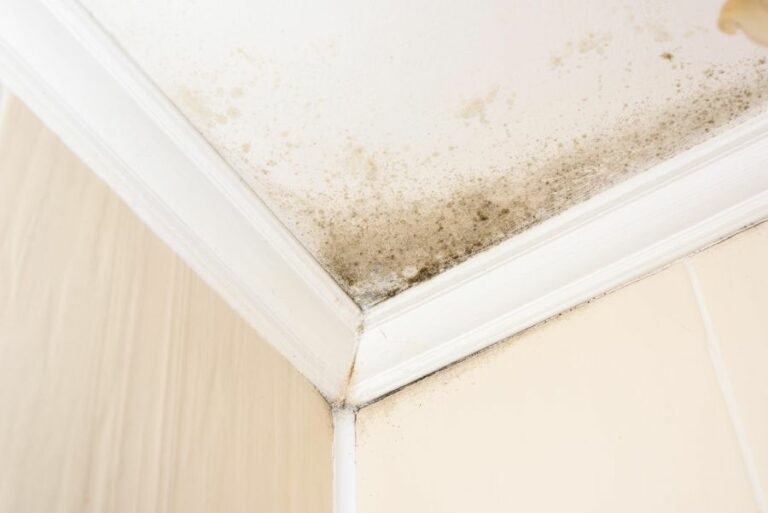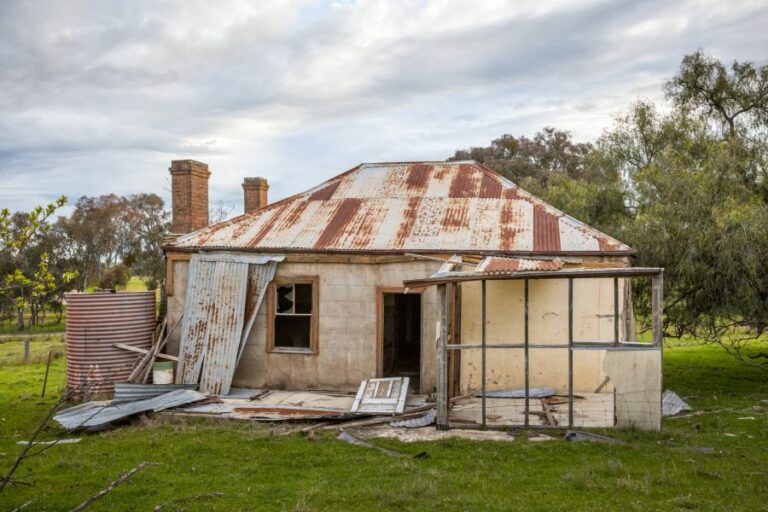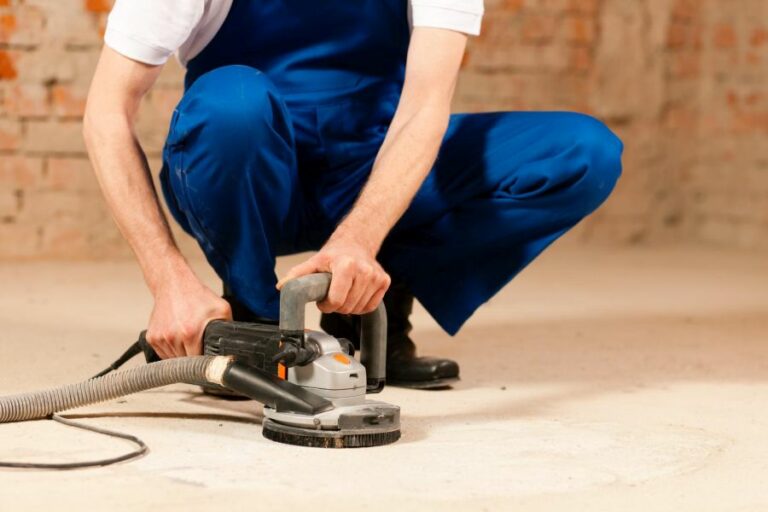Preserving Old Buildings: Surface Prep Tips and Tricks
Preserving old buildings keeps history alive and adds unique charm and character to our surroundings. A crucial aspect of such preservation is properly preparing surfaces to ensure longevity and minimal damage. With years of experience, we’re equipped with the expertise to guide you through the essential surface prep tips to keep these old buildings standing tall and proud.
Preserving old buildings: surface prep tips:
To preserve old buildings, first understand the materials and construction, like brick, stone, or wood. Employ appropriate cleaning techniques, such as chemical, steam, or abrasive cleaning. Address necessary repairs, like repointing mortar joints or fixing wooden surfaces. Apply protective coatings, like paint, varnish, or sealers, to protect surfaces.

Eager to breathe new life into an old building while maintaining its historical charm? We have expert tips on proper surface preparation to make your restoration project a success.
Read on for valuable insights and techniques that will help preserve the architectural integrity of your beloved structure.
Contents
- 1 Tips for Surface Preparation in Old Building Preservation
- 2 Methods for Sustaining Historic Structures
- 3 Key Approaches to Conserving Heritage Buildings
- 4 Debate: Preserve or Demolish Aged Structures?
- 5 Revitalizing Aged Buildings: A Comprehensive Guide
Tips for Surface Preparation in Old Building Preservation
Old buildings possess undeniable charm and historical significance. Whether you’re looking to restore a landmark or breathe new life into a dated structure, prepping the surfaces of an old building is an essential first step.
• Understanding the Building’s Materials and Construction
The first step in preserving an old building is understanding the types of materials used and how they were put together. These materials may include brick, stone, wood, or iron — each requires different techniques to ensure a successful restoration.
– Brick and Stone
Before beginning any work on the surfaces of a brick or stone building, it’s essential to identify the type of material and mortar used in the structure. According to the National Park Service, inappropriate repairs and cleaning techniques can cause irreversible damage to historic masonry.
I recommend visiting their Technical Preservation Services website for comprehensive guidance on appropriate restoration methods for brick and stone buildings.
– Wood
Wooden surfaces in old buildings can be more challenging to restore due to their susceptibility to rot and insect damage. Look for signs of deterioration and treat any issues before proceeding with surface prep.
• Surface Cleaning Techniques and Considerations
Cleaning the surfaces of an old building is an essential part of the preservation process. However, choosing the right technique is critical to avoiding damage to the structure. Here are some techniques to consider:
– Chemical Cleaning
Various chemical cleaning agents, ranging from mild detergents to specialized masonry cleaners, can be effective in removing dirt, grime, and stains from historic building surfaces.
It’s critical to choose a chemical cleaner that’s compatible with the surface material and won’t cause damage or discoloration.
– Steam Cleaning
Steam cleaning uses pressurized water heated to high temperatures, creating steam that removes dirt, stains, and organic growth. This method is effective and gentle on the surfaces of old buildings.
However, when using steam cleaning, consider the following:
- Avoid excessive water pressure that can damage the surface of the building.
- Use steam instead of hot water, as hot water can exacerbate existing damage.
– Abrasive Cleaning
Abrasive cleaning techniques use mechanical force in various forms to remove dirt, stains, and grime. Examples include sandblasting, abrasive nylon brushes, and micro-abrasives.
These techniques can be effective, but caution is necessary to avoid damaging the building’s surfaces, especially for softer materials like brick and stone.
• Surface Repair and Stabilization
Once the surfaces of the old building are clean, it’s essential to address any necessary repairs or reinforcements. Repair methods will vary depending on the specific issues at hand and the type of material the building is constructed from.
For brick and stone buildings, damaged mortar joints may need repointing. This process involves carefully removing the old mortar and replacing it with new mortar that matches the original in composition, color, and texture.
For wooden surfaces, damage may need to be repaired using wood epoxy fillers or, in some cases, replacement boards that match the original material.
Remember to exercise caution when making repairs to avoid causing further damage to the building or compromising its historical integrity.
• Applying Protective Coatings
Once repairs are complete, it’s essential to protect the surfaces of the historic building from further damage. Depending on the materials, this may involve applying paint, varnish, or sealers.
– Paint
Painting a historic building requires careful consideration, particularly when choosing a type of paint and color. The goal should always be to maintain the building’s historic character while also providing adequate protection from the elements.
Consider using historically appropriate paint colors and natural, breathable paints, like mineral (silicate-based) or limewash paints, to preserve the structure effectively.
– Varnish and Sealers
In addition to paint, varnish, and sealers can also help protect building surfaces from moisture, pests, and UV damage. Choose a varnish or sealer that’s compatible with the specific surface material and follow the manufacturer’s instructions for application.
In conclusion, properly preparing and preserving the surfaces of old buildings is essential in maintaining their architectural integrity and historical significance.
By understanding the building’s materials and construction, employing appropriate cleaning techniques, making necessary repairs, and applying protective coatings, you’ll be well-equipped for a successful preservation project.
Methods for Sustaining Historic Structures
• The Importance of Regular Maintenance
Maintaining old buildings is essential to preserve their historical, architectural, and cultural values. Proper maintenance helps prolong the structure’s life, preventing deterioration and ensuring that these structures remain functional without losing their original charm.
As a building professional with experience in the preservation of old buildings, I will share the vital steps and recommendations for maintaining these structures.
• Conducting Assessments and Inspections
Regular inspections are crucial in identifying problems before they escalate. It is advisable to conduct comprehensive assessments of the building at least once a year.
The Association for Preservation Technology International provides guidelines on how to carry out inspections in old buildings effectively.
– Structural Assessment
Examine the building’s foundation, walls, roof, and flooring for signs of damage, such as cracks or bulging. Check for water penetration, erosion, and pest infestation, as these can weaken the structure over time.
Consult a structural engineer or a preservation specialist to assess the building and recommend appropriate repairs.
– Architectural and Decorative Assessment
Assess the condition of architectural elements such as windows, doors, molding, and decorative features. Look for signs of wear and tear, decay, and damage that can jeopardize their integrity.
– Mechanical and Electrical Systems Assessment
Old buildings often have outdated electrical and mechanical systems. Regular inspections of these systems ensure they function safely and efficiently. Identify any faulty wiring, damaged pipes, or inefficient heating and cooling systems, and make the necessary upgrades or repairs.
• Implementing Preventive Measures
Preventive measures are crucial in controlling potential issues before they escalate. Below are some preventive strategies recommended for old buildings:
– Pest Control
Pest infestations can cause significant damage to old buildings. Implementing regular pest control measures helps in preventing infestations and related damages. Employ the services of a professional exterminator to inspect the building and recommend appropriate pest control strategies.
– Drainage Maintenance
Proper drainage is essential in preventing water-related damage in old buildings. Ensure the gutter systems are clean and functional to prevent water from seeping into the walls or foundation. Regularly inspect the building’s drainage systems and promptly repair any damages or blockages.
– Weatherproofing
To protect the building from the elements, ensure all doors and windows are well-sealed and the roof is watertight. Regularly inspect the building for signs of water penetration and address them immediately.
• Repairing and Restoring Damaged Features
Old buildings often have features that need repair or restoration due to wear and tear, damage, or decay. The following guidelines will help maintain these features:
– Employing Sensitive Repair Techniques
When repairing or restoring features in old buildings, always use methods and materials that match the original construction. This approach helps in retaining the building’s authenticity and ensuring compatibility between new and existing materials.
– Employing Skilled Craftsmen
Preserving old buildings requires specialized skills and craftsmanship. Hire professionals with experience in working with historical structures to ensure the building’s features are restored to their former glory.
– Prioritizing Repairs
When faced with multiple repairs in an old building, prioritize critical repairs that affect the building’s structural integrity or pose safety hazards. Once these repairs are addressed, focus on less urgent but still essential repairs to the architectural and decorative elements.
• Enhancing Energy Efficiency
Old buildings often have poor energy efficiency, which can lead to high utility costs and environmental concerns.
Identify areas where energy efficiency can be improved without compromising the building’s historical integrity, such as upgrading the insulation, sealing air leaks, and installing energy-efficient heating and cooling systems.
• Complying with Local Preservation Regulations
When maintaining old buildings, it is essential to adhere to the local preservation regulations and guidelines. Consult with your local historic preservation office to ensure that your maintenance activities align with the region’s preservation standards.
• Establishing a Maintenance Plan
Creating and following a maintenance plan is crucial to ensure the proper upkeep of old buildings. Include the following elements in your maintenance plan:
- Regular inspection schedules
- Preventive measures and activities
- A list of priority repairs and restoration projects
- Budget allocations for maintenance tasks
- Records of past repair and maintenance activities
In conclusion, maintaining old buildings is a critical task that requires meticulous attention to detail, preventive measures, and specialized skills.
By adhering to these recommendations and guidelines, you can ensure the longevity, integrity, and historical value of your old building for generations to come.
Steps | Description |
|---|---|
Regular inspections | Conducting periodic assessments to identify any structural issues, water damage, or other problems. |
Cleaning | Regular cleaning of the building’s exteriors and interiors, removing dirt, grime, and debris that can cause damage to the surfaces. |
Repair and restoration | Carrying out necessary repairs and restoration works to maintain the building’s structural integrity and aesthetics while preserving its historical features. |
Maintenance of plumbing and electrical systems | Regularly inspecting, maintaining, and upgrading the building’s plumbing and electrical systems to ensure safety and functionality. |
Pest control | Implementing pest control measures to prevent infestations that can cause damage to the building and its occupants. |
Weatherproofing | Ensuring that the building is adequately protected from weather elements such as rain, snow, and sun, by maintaining roofs, gutters, and drainage systems, and applying weather-resistant coatings to exterior surfaces. |
Adherence to building codes and regulations | Updating the building’s features to comply with local building codes and regulations, while preserving its historical and architectural significance. |
Proper ventilation | Ensuring adequate airflow through the building to prevent the build-up of moisture and humidity, which can lead to damage and mold growth. |
Key Approaches to Conserving Heritage Buildings
Historic preservation is a crucial aspect of protecting our shared cultural heritage. By conserving historic structures, landscapes, and artifacts, we ensure that future generations can appreciate and learn from the past.
• Surveying and Documentation
One of the first steps in historic preservation is to identify and document the historic resources that are worthy of protection. This process typically involves conducting a thorough survey of a site, collecting data on its history, architectural features, and current condition.
– Historic Resource Surveys
A historic resource survey is an essential tool for preservationists, as it helps to identify and evaluate historic properties. Surveys can take various forms, from simple windshield surveys to intensive site assessments.
I recommend using a standardized survey form, such as those provided by the National Park Service, to ensure consistency in data collection.
– Architectural Drawings and Photographic Documentation
Accurate architectural drawings and photographs are critical in preserving historic structures. They provide a record of the building’s appearance and help to guide restoration efforts.
I suggest using high-quality digital cameras and taking photos from multiple angles to capture the building’s details accurately. When creating architectural drawings, it’s essential to use precise measurements and clearly label all features.
• Condition Assessments
Once a historic structure has been identified and documented, the next step is to assess its current condition. This process can help determine the level of preservation work needed and aid in making restoration and repair decisions.
– Visual Inspections
Performing a visual inspection allows preservationists to identify any obvious signs of deterioration or damage.
This process should be done methodically, starting at the top of the structure and working downwards. Be sure to take note of any cracks, water damage, or structural issues that may require immediate attention.
– Material Analysis
Understanding the materials used in a historic structure is crucial for its preservation. This process may involve taking samples for laboratory analysis, such as testing paint layers or mortar composition.
• Restoration and Repair
Restoration and repair work play a significant role in preserving historic structures’ integrity and longevity. These techniques are used to address specific issues, such as water damage or structural instability.
– Conservation Treatments
Conservation treatments aim to stabilize and protect historical materials. This may involve cleaning, consolidating, or repairing damaged building elements.
It is essential to use specialized methods and materials that are compatible with the historic fabric, as recommended by organizations such as the American Institute for Conservation.
– Structural Repairs
Structural repairs address issues related to a building’s stability and safety, such as foundation problems or damaged load-bearing walls.
In these cases, it’s essential to consult with preservation engineers or structural specialists to ensure that the repairs are done correctly and respect the building’s historic character.
• Adaptive Reuse
Adaptive reuse is the process of reimagining a historic structure for a new purpose while maintaining its architectural and cultural significance. This approach allows historic buildings to remain in use, contributing to their long-term preservation.
– Feasibility Studies
Before undertaking an adaptive reuse project, it’s important to conduct a feasibility study. This process involves assessing the building’s condition, evaluating potential new uses, and identifying any necessary modifications.
I recommend working with a team of architects, preservationists, and engineers to develop a plan that meets both preservation and functional objectives.
– Compatible Design
When adapting a historic structure for a new use, it’s important to create a design that is compatible with the building’s historic character. This can be achieved by maintaining original architectural features, using compatible materials, and designing new additions that are sensitive to the existing structure.
Consult guidelines provided by the Secretary of the Interior’s Standards for the Treatment of Historic Properties for additional guidance.
• Community Involvement and Education
Engaging the community and promoting public awareness of historic preservation are essential in fostering support for these efforts. By informing the public about the importance of preserving our shared heritage, preservation projects can gain funding, volunteers, and political backing.
– Public Outreach and Education
Hosting public events, such as workshops, guided tours, or open houses, can promote interest in historic preservation.
Encourage local schools to incorporate preservation into their curriculum, showcasing the importance of our shared history. Partnering with local preservation organizations and sharing resources can assist in these efforts.
– Historic Preservation Advocacy
Advocacy plays a crucial role in ensuring continued support for historic preservation. By working with local governments and preservation commissions, preservationists can help shape policies and funding decisions that will protect historic resources.
I recommend staying up to date on preservation-related legislation and joining preservation organizations, such as the National Trust for Historic Preservation, to remain informed on current issues and best practices.
In conclusion, there are a variety of techniques and approaches used in historic preservation, ranging from initial documentation and assessment to restoration and adaptive reuse.
By implementing these strategies and engaging with the community, we can successfully protect our shared cultural heritage for future generations to appreciate and learn from.
Technique | Description |
|---|---|
Documentation | Recording and cataloging of historic resources through text, photographs, drawings, and maps. |
Survey and Inventory | Identification and evaluation of historic properties through fieldwork and research to establish significance and integrity. |
Preservation Planning | Development of policies and guidelines to manage historic resources and balance growth and change with preservation goals. |
Stabilization | Measures taken to prevent further deterioration of a historic property by addressing structural or environmental issues. |
Rehabilitation | Repairs or alterations to a historic property that allow for contemporary use while preserving the property’s significant features and spaces. |
Restoration | Returning a property to its appearance during a specific period of significance by removing non-historic alterations and reconstructing missing features. |
Reconstruction | Replicating a missing or severely damaged historic property through new construction, based on historical, architectural, and archaeological evidence. |
Adaptive Reuse | Converting a historic property to a new function that is compatible with its architectural features and historic significance. |
Conservation | Specialized treatment of historic materials and building systems to prolong their life and retain their historical value. |
Debate: Preserve or Demolish Aged Structures?
The debate surrounding the fate of old buildings is a contentious one. Many experts and community members argue passionately about whether these structures should be preserved or demolished.
• Historical Significance and Cultural Heritage
One of the primary reasons proponents of old building preservation put forward is the historical and cultural significance of these structures. They often represent the architectural styles, craftsmanship, and events relevant to the periods in which they were built.
A well-maintained historic property can provide a fascinating glimpse into the local and broader history, enhancing a sense of place and identity.
An excellent resource for information on the cultural and historical value of old buildings is the National Trust for Historic Preservation, a trusted organization dedicated to protecting America’s architectural and cultural heritage. Their website (www.savingplaces.org) offers additional guidance on this matter.
• Sustainability and Environmental Impact
Another essential factor to consider is the environmental benefits of preserving old buildings. Often, these structures were built with materials and methods that are more sustainable and energy-efficient than their modern counterparts.
Demolition tends to generate a significant amount of waste, while preservation often minimizes the environmental footprint of a building project.
Additionally, many old buildings can be adaptively reused for alternative purposes, blending the past with the present and breathing new life into a structure.
An exemplary case of sustainable preservation is the transformation of old mills or factories into contemporary mixed-use developments, art galleries, or community spaces.
• Economic Benefits of Preservation
A third argument in favor of preserving old buildings is the economic benefits. Well-preserved, historic structures can become desirable tourist attractions or commercial assets, generating revenue and attracting investment in the local community.
Preservation projects can also create jobs in the fields of architecture, construction, and tourism.
Moreover, the preservation of historic properties can lead to increased property values in the surrounding area, benefiting property owners and the local economy.
• Barriers to Preservation: Cost and Safety
Despite the numerous benefits of preserving old buildings, there are also practical concerns to consider.
The cost of restoration and maintenance can be prohibitive, with many older structures requiring extensive, specialized work to address issues such as structural repairs, accessibility upgrades, and energy efficiency improvements.
Furthermore, safety is a crucial consideration, as many old buildings may pose hazards due to construction methods and materials that no longer comply with current building standards.
In some instances, demolition and reconstruction might prove to be the more responsible approach to ensure the safety and well-being of occupants.
• The Demolition Perspective
Those arguing in favor of demolition often focus on potential hindrances imposed by old buildings.
In many cases, these structures occupy prime real estate that could be better utilized for contemporary purposes or addressing pressing social and economic issues such as affordable housing, public facilities, or economic development.
Another argument is that the preservation of old structures can sometimes stagnate the growth or evolution of a community, preventing progress and denying the opportunity for new architectural styles and ideas.
• Weighing the Pros and Cons
As a seasoned professional in this field, I recommend carefully considering both the arguments for and against old building preservation in each individual case.
The historical, cultural, environmental, and economic value of the property should be assessed, as well as the potential hazards, costs, and barriers to preservation.
A collaborative approach that involves input from stakeholders, property owners, community members, experts, and government officials can help navigate this complex issue and ensure that an informed and thoughtful decision is made.
• Conclusion
Ultimately, there is no one-size-fits-all answer to the question of whether old buildings should be preserved or demolished. Each situation is unique and requires a thorough consideration of the factors outlined in this article.
By carefully weighing the pros and cons, we can make informed decisions that respect the past and present while building a vibrant and sustainable future.
Revitalizing Aged Buildings: A Comprehensive Guide
Revamping an old building can breathe new life into a forgotten space while preserving its historical charm.
• Assessing the Existing Structure
Before any renovation work begins, it’s crucial to conduct a thorough assessment of the existing structure. This process involves:
– Inspecting the Building
Inspect the building’s exterior and interior for signs of structural damage, water infiltration, and pest problems. Hire a professional building inspector or structural engineer to assess the building’s foundation, walls, roof, windows, and doors.
They can identify any areas that require immediate attention and provide recommendations for repairs or replacements. For more information on building inspection, visit the International Code Council’s website.
– Evaluating the Architectural Features
Make a list of the building’s architectural features that should be preserved or restored, such as crown molding, decorative window frames, or terrazzo flooring. These features can be incorporated into the new design while blending seamlessly with modern amenities.
– Considering Energy Efficiency and Sustainability
Determine if the building’s insulation, heating, and cooling systems are energy-efficient and sustainable. Consider upgrading to energy-efficient windows or installing solar panels or geothermal heating systems. Additionally, look for ways to reuse materials from the demolition process in the new design.
• Assembling the Renovation Team
Once the building’s condition has been assessed, it’s time to assemble a team of professionals, including:
- Architect or designer
- Structural engineer
- General contractor
- Specialty contractors (HVAC, plumbing, electrical, etc.)
- Preservation consultants
Working with experienced professionals can help ensure that the renovation project is completed on time and within budget while maintaining the building’s historical integrity.
• Creating the Design Plan
With the assessment complete and the renovation team in place, it’s time to develop a design plan that incorporates the building’s unique features and meets the needs of its occupants. Consider the following aspects when creating a design plan:
– Spatial Planning
Space planning is crucial for creating an efficient layout that meets the occupants’ needs. Consider how the renovated building will be used and which spaces need to be updated or added. Preserve any significant architectural elements or historical spaces that contribute to the building’s character.
– Material Selection
Choose materials that complement the building’s existing features and reflect its history. When possible, use sustainable or locally-sourced materials to reduce the renovation’s environmental impact. Consider the materials’ durability and maintenance requirements when making selections.
– Maintaining Historic Integrity
Integrate modern amenities and technology with the building’s original features while preserving its historic integrity. This can be achieved by sensitively updating the building’s infrastructure, such as plumbing, electrical, and mechanical systems, without compromising its architectural character.
• Applying for Permits and Meeting Regulations
Before starting any renovation work, it’s essential to obtain the necessary permits and meet any building codes or historic preservation requirements. Consult with your renovation team about the applicable local and state regulations and make sure you’re in compliance before proceeding with the project.
• Demolition and Salvage
Begin the renovation process by carefully demolishing and removing any elements that need to be replaced or are not part of the new design.
Salvage any reusable materials and architectural features for reuse in the new design or donate them to local restoration projects or organizations, such as the Architectural Salvage Warehouse.
• Construction and Restoration
With the demolition and salvage complete, it’s time to begin the construction and restoration process. This phase should include:
– Structural Repairs
Address any structural issues identified during the initial assessment, such as repairing or reinforcing foundations, walls, or roof structures.
– Restoration of Architectural Features
Restore and preserve any significant architectural features, such as decorative millwork, plasterwork, or flooring, maintaining the building’s historic character.
– Updating Infrastructure
Update the building’s HVAC, electrical, and plumbing systems to increase energy efficiency, functionality, and safety while remaining sensitive to the building’s historic character.
– Finishing Touches
Implement the finishing touches of the design plan, such as installing new cabinetry, lighting fixtures, and flooring materials.
• Final Inspection and Occupancy
After the construction work is completed, schedule a final inspection with a local building inspector to ensure that all renovations meet code requirements and obtain a certificate of occupancy if necessary. With all the work complete, the revamped old building is now ready for its new occupants.
In conclusion, revamping an old building requires careful planning, coordination, and execution.
By following this comprehensive guide and working with an experienced renovation team, you can create a revitalized space that respects the building’s history while meeting modern-day needs and energy efficiency standards.
Step | Description |
|---|---|
1. Assess the Building’s Condition | Inspect the building to determine its structural stability, identify any issues, and gather information about historical elements that need preservation. |
2. Define Goals and Objectives | Outline the desired vision for the building’s use and layout, and set objectives that specify desired outcomes of the renovation. |
3. Develop a Budget and Timeline | Establish a budget that accounts for the costs of renovations, permits, and contingencies, and create a timeline for each stage of the project. |
4. Assemble a Project Team | Select professionals with experience in historical renovations, such as architects, contractors, and engineers, to execute the project. |
5. Acquire Necessary Permits and Approvals | Apply for renovation permits and secure approvals from government agencies and local historical commissions, if necessary. |
6. Begin Demolition and Abatement | Start by removing hazardous materials and contaminants, then proceed with selective demolition to remove damaged or unwanted elements of the building. |
7. Proceed with Renovations | Carry out renovations based on the design plan and objectives. Ensure that the building’s historic character is preserved while making necessary structural improvements. |
8. Inspect and Review Results | Upon completion of the project, arrange for a final inspection and review to ensure that the renovation meets set goals and maintains the building’s historical integrity. |







